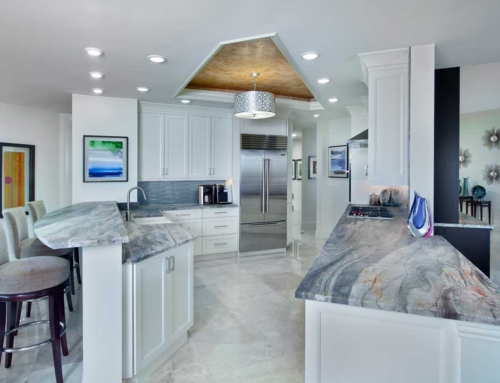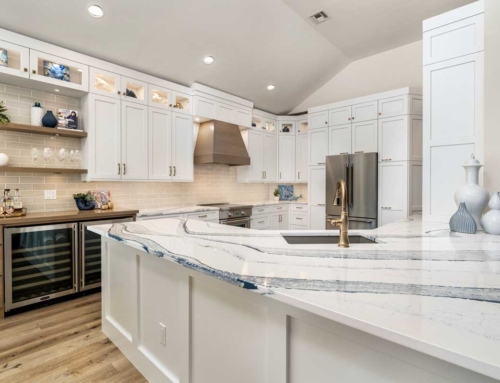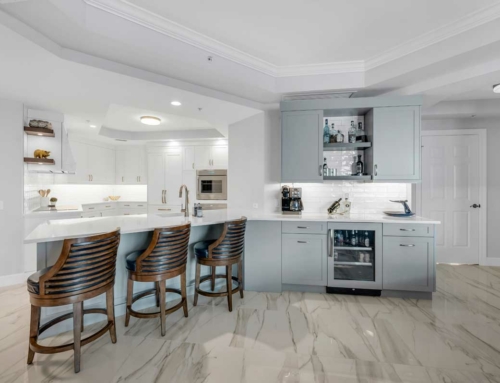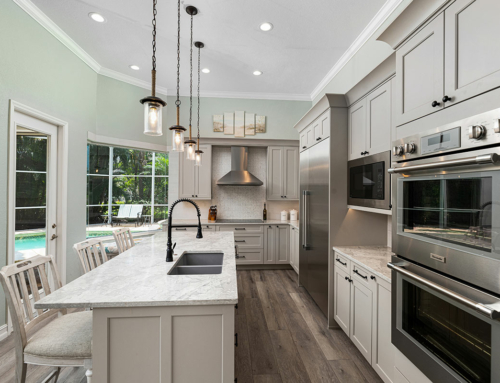Living in your home during a remodel causes stress for everyone involved. The constant activity, dust, and noise wreak havoc for those who appreciate their quiet lives. But if you don’t have the option to live elsewhere for the duration, here are a few tactics to create peace amidst the storm.
Ask Questions and Be Informed
Forewarned is forearmed, even in construction. To make the process smoother, meet with your design/build contractor before the project even begins. Set start and end dates for the project with milestones along the way. Ask him things like:
- Do you have a product management dashboard that I’ll have access to? Will it enable me to keep abreast of the progress, submit change requests, or otherwise communicate with you?
- If not, how will I stay informed and communicate with you?
- What are the start and stop times for the work crews each day? Will you work on weekends or holidays?
- What does your Covid-19 protocol include?
- What can I expect as far as dust and noise are concerned? Will you mask off rooms to prevent dust from escaping?
- What other protective measures do you suggest, to keep our children and pets safe?
Protect Your Home and Valuables
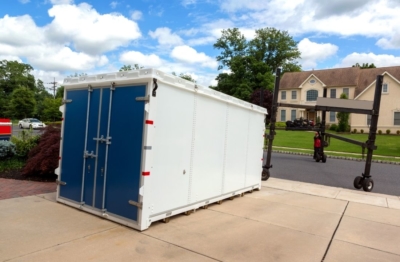
Before construction begins, pack and store all personal items from the remodeling zone. Also, remove items from the walls of adjacent rooms. Vibrations from tools or hammering can knock pictures off walls and cause your precious things to fall from shelves.
Store important documents and valuables in a secure location. You may consider renting a portable storage unit to keep the rest of the home from getting cluttered with boxes. Once you’re in the thick of construction, having the rest of your home clutter-free brings peace at the end of the day.
What will your contractor do to protect your home and family? A few additional items to discuss with the project manager during that initial meeting include:
- Which entrances workers will use for both foot traffic and for bringing in materials.
- The planned use of a lockbox with one key that stays onsite, for security purposes.
- The location of the dumpster for construction waste and how they’ll protect it from scavengers or children.
- What measures they’ll take to protect the interior and exterior of your home from dust, traffic, and vibrations. Specifically, things like the A/C units, roof, guttering, and flooring.
- If they’ll repair any lawn or landscape damage caused by the extra traffic and parking at your home.
Address Dangers: Designate Restricted Areas

Discuss the dangers of home construction with all family members before the work begins. Communicate with them which rooms or areas of the yard are off-limits and why. Continue the discussion as you reach new milestones and new dangers present themselves.
So that everyone is abreast of what’s happening when, add the construction to your family’s calendar. By accessing the contractor’s project management dashboard, you can plan on outside activities or extra child and/or pet care for days that may be particularly loud or stressful. Speak with your veterinarian about the need for a sedative for particularly sensitive pets. Otherwise, plan to keep them in an area of the home with the least amount of noise or upheaval. The strategic use of baby gates sets tighter boundaries when workers are on-site. Then on weekends, use them to cordon off only the construction zone.
Create a Bathroom Plan for Family Members
If your home remodel includes a bathroom renovation, you need to plan for living with fewer options. Create a schedule before the renovation process begins that allots specific time slots to each person. Move make-up and hair care to the bedrooms to free up the bathroom space. And, if necessary, limit the length of showers. A few other options could include:
- Stock up on hand sanitizer and baby wipes for mid-day wash-ups of small children.
- Use the laundry tub for hair washing and baby baths.
- Adults can shower at the gym.
- Take small children to grandma’s for bath and story time a couple of times a week.
Create a Kitchen Plan

Home Run Solutions via MBAKS
Living without a kitchen makes life complicated. Before the demolition begins on your kitchen, have a survival plan in place. Include the following tactics to make the process much smoother.
Choose an alternative space—If you have an outdoor kitchen, use it. If not, find space elsewhere to set up the refrigerator and stove. If you have a sink in the laundry area, that space is ideal. Otherwise, consider the garage. If the old appliances won’t fit, set up a countertop area where you can use a hot plate, microwave, toaster oven, or slow cooker. Set a mini-fridge underneath and you’re set.
Create a meal plan—When your home is in the throes of topsy-turvey, you don’t need to be figuring out how and what everyone is going to eat. Create a meal plan that includes using the grill, reheating freeze-ahead meals in the microwave, a little bit of take-out, and a whole lot of paper plates. If you don’t already, purchase veggies pre-chopped, cheese already shredded, and pre-made burgers. Or, subscribe to a meal plan that delivers the food and recipes ready to cook.
Pack everything—While packing the contents of the kitchen cabinets, reserve a box for items you’ll use during the renovation. Check your meal plan to see what utensils will be essential and set up a temporary set of drawers or bins in the makeshift kitchen to hold the items.
Take Advantage of Outdoor Living Areas
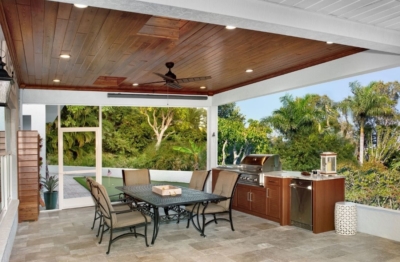
A 1984 study found that surgery patients who recovered in a room with a large window overlooking nature “had shorter postoperative hospital stays” and “took fewer potent analgesics” than patients recovering in rooms overlooking brick walls. Ever since that pivotal study, architects and design/build contractors have been soothing the souls of homeowners by including biophilic design elements into their homes. What better time to be outside, in nature, than when your home is in the chaos of construction.
To make using outdoor living space more comfortable, schedule your construction during temperature-friendly months. Use the grill and enjoy meals al fresco. If needed, invest in patio umbrellas or a shade sail for hot days. And in the evenings, host an outdoor movie night for the neighbors, play games, and relax.
Plan Relaxation, Particularly if You’re Feeling Anxious
Begin your remodeling journey with an arsenal of fun. Then when things get hairy, you’ll already have a list of go-to activities to get you out of the house and in a better frame of mind. Plan a family outing night for the movies, bowling, bike riding, or going out to eat. Designate one room of the house for quiet activities only. Take extra photos, not just of the remodel but of the family enjoying the time together, and create a scrapbook. No matter what happens, decide ahead of time to make this a memorable and relaxing experience.
The easiest way to ensure a stress-free remodeling project is to partner with an experienced design/build remodeling firm like Progressive Design Build in Southwest Florida. Progressive includes all of these details in their process. They keep you informed. Their team takes extra measures to protect your home, furnishings, and family. And, they otherwise make the entire experience as seamless and with as few distractions as possible. Take a look at their portfolio to see how their expertise has helped Southwest Florida homeowners with all their remodeling needs. And, for the latest in Southwest Florida home design trends, subscribe to their newsletter, or reach out directly for a free consultation.


